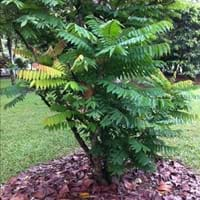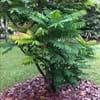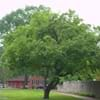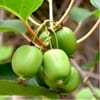Life Span
Perennial
Annual
Type
Flowering Plants, Herbs
Grass
Origin
Hybrid origin
Eastern Africa, Northern Africa, Southern Asia, Southeastern Asia
Types
Not Available
Akia Beruin Red, Ofada Rice, Topaz
Habitat
moist forests, Mountains
Muddy habitat
USDA Hardiness Zone
4-9
8-15
Sunset Zone
1a, 1b, 2a, 2b, 3a, 3b, 4, 5, 6, 7, 8, 9, 10, 11, 12, 13, 14, 15, 16, 17, 18, 19, 20
Not Available
Habit
Clump-Forming
Clump-Forming
Minimum Height
Not Available
Minimum Width
Not Available
Flower Color
Purple, Pink, Lavender
White
Flower Color Modifier
Bicolor
Bicolor
Leaf Color in Spring
Green
Green
Leaf Color in Summer
Green
Light Green
Leaf Color in Fall
Green
Green
Leaf Color in Winter
Green
Not Available
Leaf Shape
Pinnate
Grass like
Plant Season
Spring, Summer
Summer, Fall
Sunlight
Full Sun
Full Sun
Growth Rate
Fast
Very Fast
Type of Soil
Clay, Loam, Sand
Clay, Loam
The pH of Soil
Acidic, Neutral, Alkaline
Acidic, Neutral, Alkaline
Soil Drainage
Well drained
Average
Bloom Time
Late Spring, Summer
Not Available
Tolerances
Drought, Salt
Wet Site, Salt
Where to Plant?
Ground
Ground
How to Plant?
Cuttings, Seedlings
Seedlings, Transplanting
Plant Maintenance
Medium
Medium
Watering Requirements
Needs very little water
Keep plant submerged in water
In Summer
Lots of watering
Ample Water
In Spring
Moderate
Lots of watering
In Winter
Average Water
Consistently
Soil pH
Acidic, Neutral, Alkaline
Acidic, Neutral, Alkaline
Soil Type
Clay, Loam, Sand
Clay, Loam
Soil Drainage Capacity
Well drained
Average
Sun Exposure
Full Sun
Full Sun
Pruning
cut main trunk every 5 years, Prune after flowering, Prune central stem, Remove damaged leaves, Remove dead branches, Remove dead leaves
No need to prune
Fertilizers
All-Purpose Liquid Fertilizer, Apply 5-10-5 amounts, Compost
Fertilize the soil before planting, Phosphorous, Potassium
Pests and Diseases
Nematodes, Red blotch, Trunk Rot
Bacteria, Birds, fungus, Nematodes, Rats, Snails, Viruses
Plant Tolerance
Drought
Salt, Wet Site
Flowers
Showy
Insignificant
Flower Petal Number
Single
Single
Foliage Texture
Medium
Medium
Foliage Sheen
Glossy
Matte
Attracts
Butterflies, Leaf Hoppers
Birds
Allergy
Itchiness, Not Available, Sore Throat
Not Available
Aesthetic Uses
Beautification
Not Used For Aesthetic Purpose
Beauty Benefits
Anti-ageing, Good Cleanser, Remove blemishes, Removes pimples
Good for skin
Environmental Uses
Air purification, Food for animals, Food for birds, soil stabilisation
Air purification, Prevent Soil Erosion
Medicinal Uses
Cough, Haemorrhages, Laxative, Obesity, Tonic
Energy, High blood pressure, Skin Disorders, Swelling
Part of Plant Used
Fruits, Leaves
Seeds
Other Uses
Added to salads, Can be boiled and seasoned, pickled, Culinary use
Starch, Used as a nutritious food item, Used As Food
Used As Indoor Plant
No
No
Used As Outdoor Plant
Yes
Yes
Garden Design
Container, Cutflower, Mixed Border, Rock Garden / Wall, Wildflower
Container, Dried Flower/Everlasting, Edible, Herb / Vegetable, Houseplant, Tropical, Water Gardens
Botanical Name
Averrhoa bilimbi
ORYZA
Common Name
Bilimbi, Mimbro
Rice
In Portuguese
bilimbi
arroz
In Latin
Rondo Beardtongue
rice
Phylum
Magnoliophyta
Magnoliophyta
Class
Magnoliopsida
Liliopsida
Order
Oxalidales
Cyperales
Family
Oxalidaceae
Poaceae
Clade
Angiosperms, Eudicots, Rosids
Not Available
Tribe
Not Available
Not Available
Subfamily
Not Available
Not Available
Number of Species
Not Available
Importance of Bilimbi and Rice Plant
Want to have the most appropriate plant for your garden? You might want to know the importance of Bilimbi and Rice Plant. Basically, these two plants vary in many aspects. Compare Bilimbi and Rice Plant as they differ in many characteristics such as their life, care, benefits, facts, etc. Every gardener must at least have the slightest clue about the plants he wants to plant in his garden. Compare their benefits, which differ in many ways like facts and uses. The medicinal use of Bilimbi is Cough, Haemorrhages, Laxative, Obesity and Tonic whereas of Rice Plant is Energy, High blood pressure, Skin Disorders and Swelling. Bilimbi has beauty benefits as follows: Anti-ageing, Good Cleanser, Remove blemishes and Removes pimples while Rice Plant has beauty benefits as follows: Anti-ageing, Good Cleanser, Remove blemishes and Removes pimples.
Compare Facts of Bilimbi vs Rice Plant
How to choose the best garden plant for your garden depending upon its facts? Here garden plant comparison will help you to solve this query. Compare the facts of Bilimbi vs Rice Plant and know which one to choose. As garden plants have benefits and other uses, allergy is also a major drawback of plants for some people. Allergic reactions of Bilimbi are Itchiness, Not Available and Sore Throat whereas of Rice Plant have Not Available respectively. Having a fruit bearing plant in your garden can be a plus point of your garden. Bilimbi has no showy fruits and Rice Plant has no showy fruits. Also Bilimbi is not flowering and Rice Plant is not flowering . You can compare Bilimbi and Rice Plant facts and facts of other plants too.





